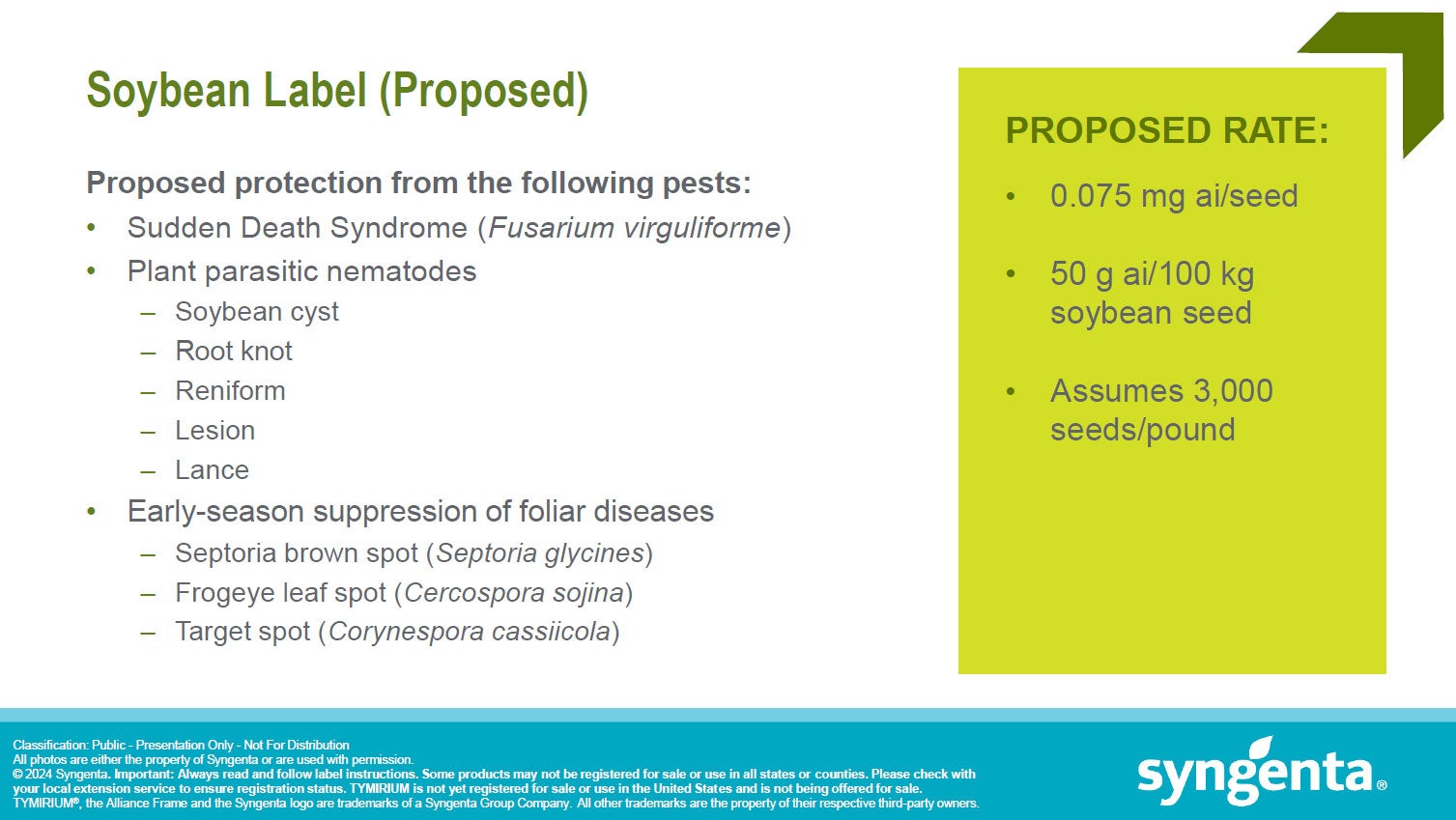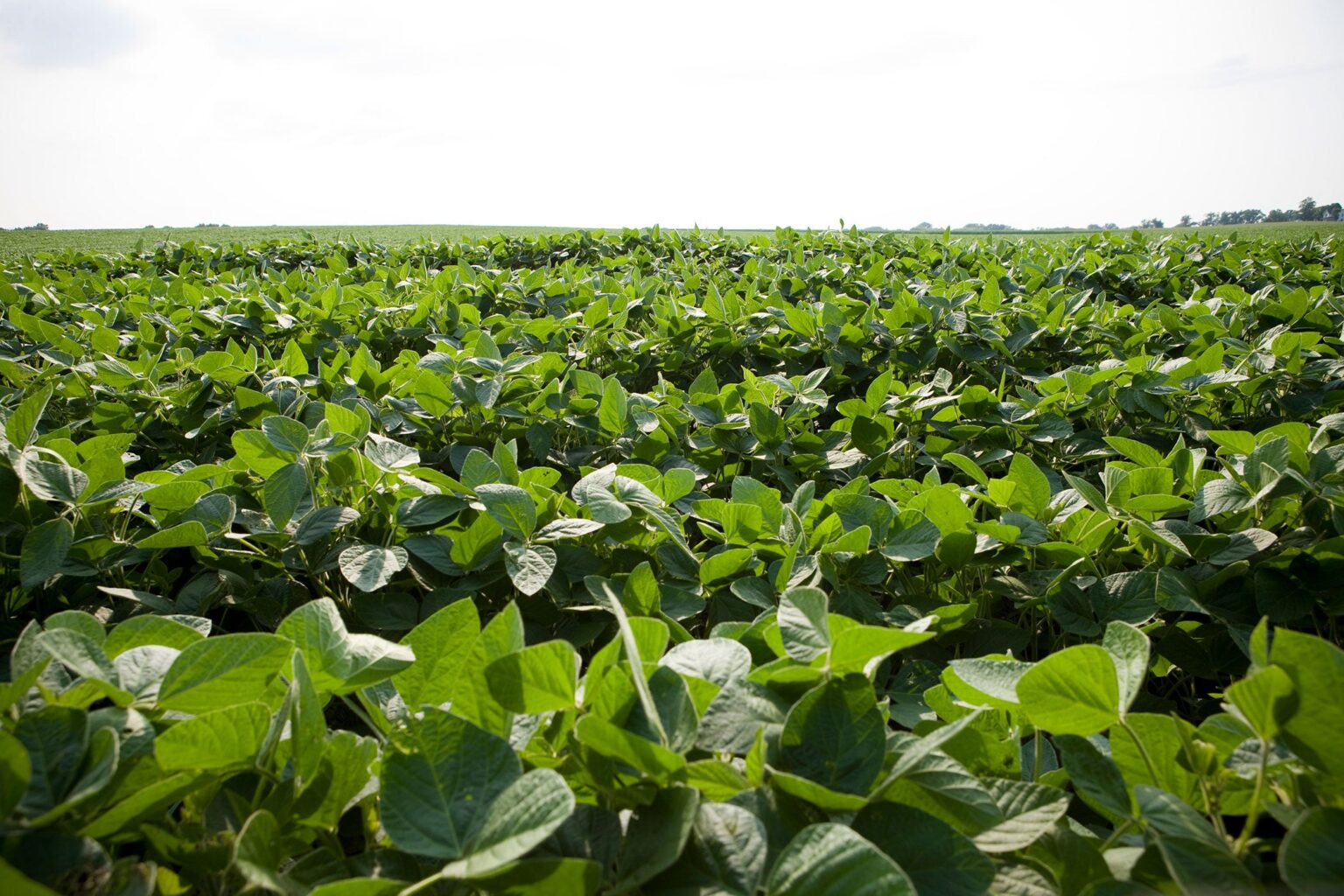GREENSBORO, N.C. — The presence of soybean cyst nematode is well known to cause plant stunting and yellowing, with some estimates showing the financial toll across the U.S. to be as high as $1.5 billion annually — or worth more than 100 million bushels. To help address this, Syngenta is on the cusp of commercially releasing a fungicide with a new active ingredient that will be marketed as TYMIRIUM technology.
“For our U.S. soybean grower, among the top five issues that they face, soybean cyst nematode is by far and away number one,” Katie Jaeger, U.S. Soy Seedcare Product Lead for Syngenta, said during an event at the company’s newly built headquarters facility in Greensboro.
With TYMIRIUM technology being an succinate dehydrogenase inhibitors (SDHI) it will provide protection against all major plant parasitic nematodes — such as soybean cyst, root knot, reniform, lesion, and lance — as well as sudden death syndrome (SDS).
This new product has a low-use rate and is designed to selectively target damaging nematodes, while preserving the beneficial species crucial for soil health and biodiversity.

“One thing that’s very unusual with TYMIRIUM is that it also suppresses some foliar diseases, including septoria brown spot, frogeye leaf spot, and target spot,” said Dale Ireland, Syngenta’s U.S. Corn and Soy Seedcare Technical Product Lead. “Now those are more mid-season diseases, and we’re not suggesting that TYMIRIUM is going to replace a foliar fungicide use, but when those foliar fungicides are applied on the farm on the R2 stage, the plants will be much cleaner, and you will allow a higher yield trajectory.”
He added that, based on the testing Syngenta has done against competitor products as well as its own Saltro product, TYMIRIUM “sets a whole new statistical group as far as a higher predictable yield.”
The trial data specifically showed that, with a 90 percent level of confidence, TYMIRIUM will deliver a better yield than any of the other competitors.
Improved protection against nematodes becomes more important as the conditions for soybean planting each spring are shifting. Not only has much of the country experienced wet winters two of the past three years, but the planting is now rolling by about the second week of April, compared with the end of April, which used to be the case.
Earlier planting tends to mean wetter, cooler conditions, where germination and establishment are slower. That allows more feeding by nematodes, as well as infection by plant pathogens. Factor in the trend toward declining seeding rates, and there are going to be more stressors on the plants.
So growers should take advantage of innovative opportunities to address issues — and address them early.
For example, Ireland explains that while SDS is infected during early growth, it expresses later in the growing season. Yet that infection has been growing below ground the entire season, and that’s why seed treatments can really reduce that
“TYMIRIUM does a really bang up job on that,” he said.
Ryan Tipps is the founder and managing editor of AGDAILY. He has covered farming since 2011, and his writing has been honored by state- and national-level agricultural organizations.


